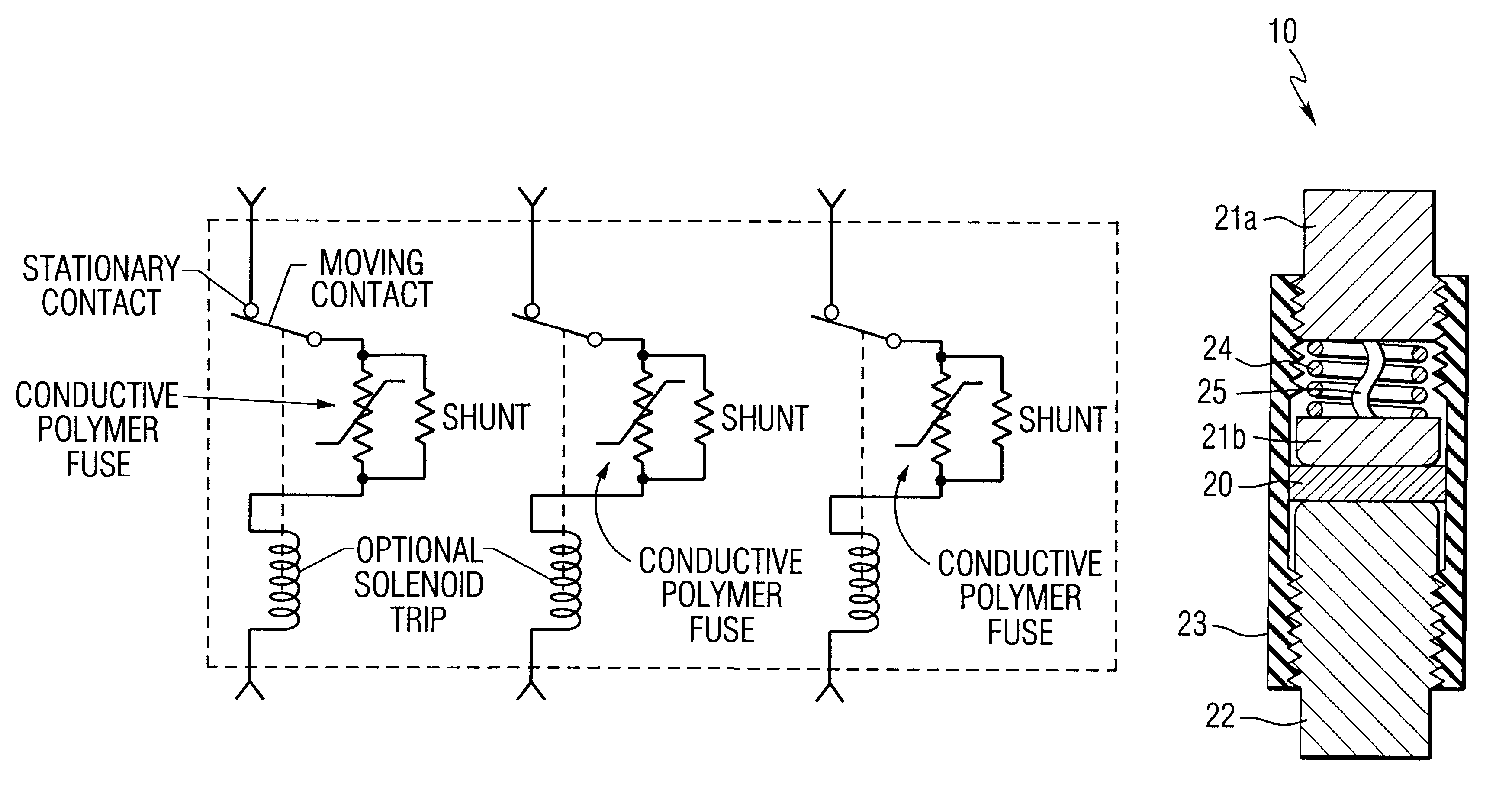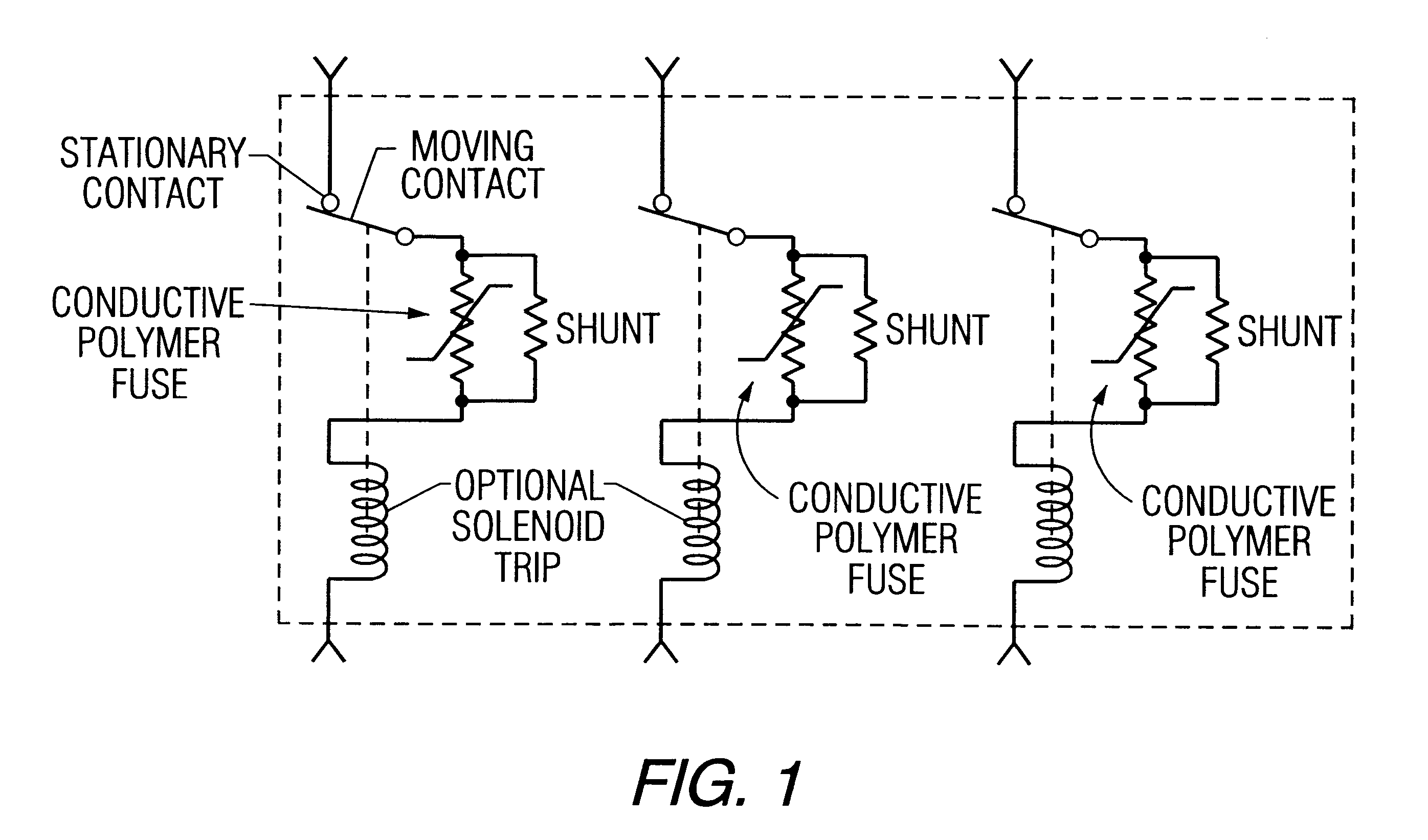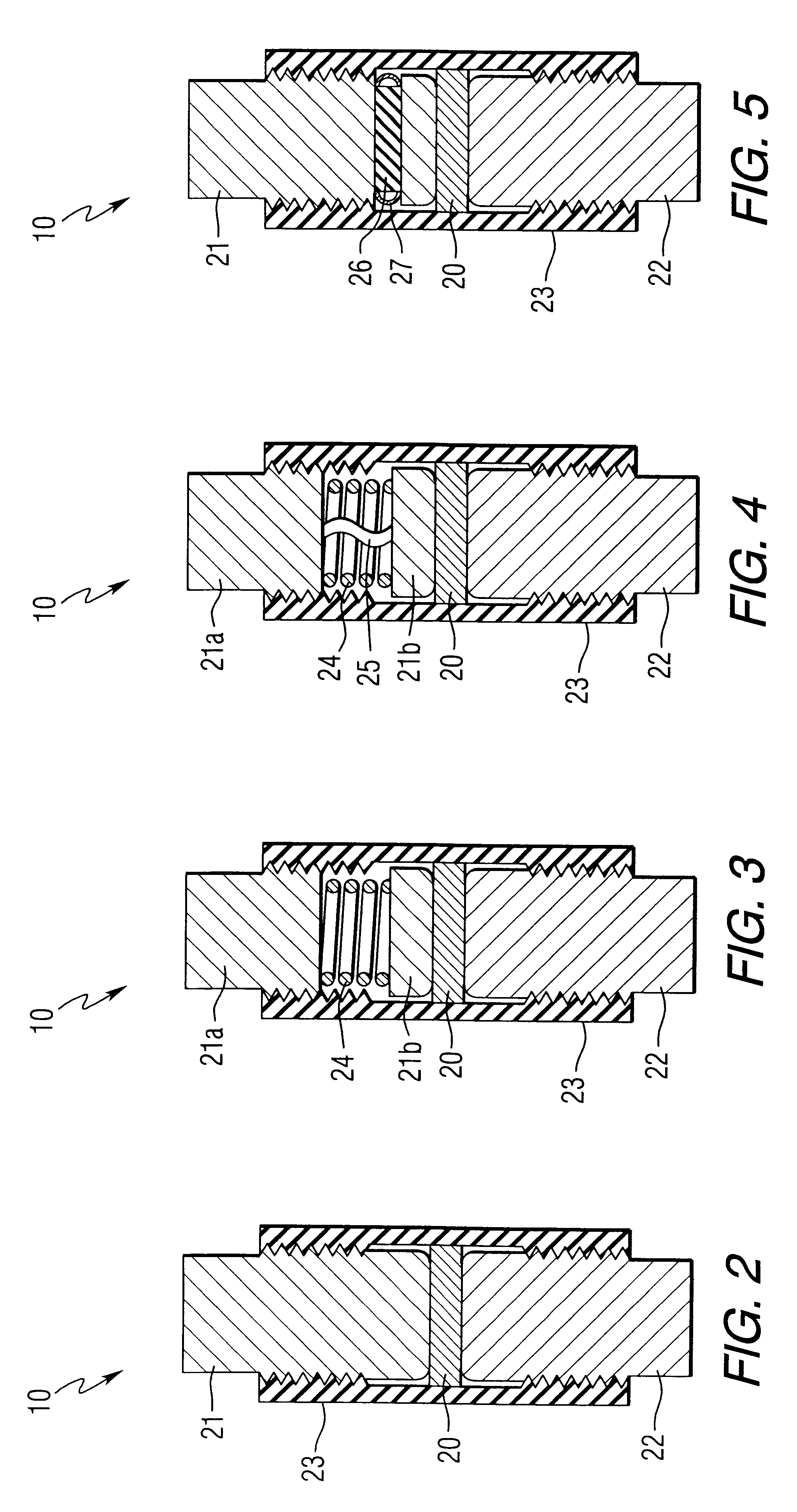Conductive polymer current-limiting fuse
a current-limiting fuse and polymer technology, applied in current-responsive resistors, over-voltage protection resistors, varistors, etc., can solve the problems of increasing the potential for serious damage, brittleness and hardness of materials, and not being easily deformed
- Summary
- Abstract
- Description
- Claims
- Application Information
AI Technical Summary
Benefits of technology
Problems solved by technology
Method used
Image
Examples
Embodiment Construction
prototype laboratory device was made in the following manner. An uncured metal fillet RTV silicone elastomer was used to make a flat one inch diameter 0.065 inch thick disk of conductive elastomer. A section measuring 0.5 inch.times.0.75 inch.times.0.065 inch was cut from the disk and placed against a flat copper electrode (0.375 inch wide.times.1 inch long.times.0.020 inch thick) in a fixture with a threadably adjustable screw for setting the pressure on the elastomer. The other electrode consisted of a 3 / 8 inch diameter 0.5 inch long copper slug with a blunt nose radius on the end contacting the elastomer. A polyethylene rod, 0.25 inch diameter.times.0.5 inch long, was placed between the copper slug and a bolt used to apply pressure to the elastomer. The bolt was adjusted to provide the desired electrical resistance (approximately 3 mOhm) between the copper slug and the flat electrode. Electrical connections were made between the flat copper electrode and a second piece of 0.020 i...
PUM
 Login to View More
Login to View More Abstract
Description
Claims
Application Information
 Login to View More
Login to View More - R&D
- Intellectual Property
- Life Sciences
- Materials
- Tech Scout
- Unparalleled Data Quality
- Higher Quality Content
- 60% Fewer Hallucinations
Browse by: Latest US Patents, China's latest patents, Technical Efficacy Thesaurus, Application Domain, Technology Topic, Popular Technical Reports.
© 2025 PatSnap. All rights reserved.Legal|Privacy policy|Modern Slavery Act Transparency Statement|Sitemap|About US| Contact US: help@patsnap.com



